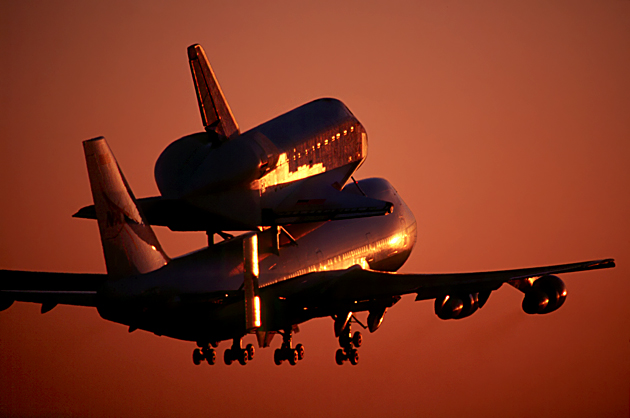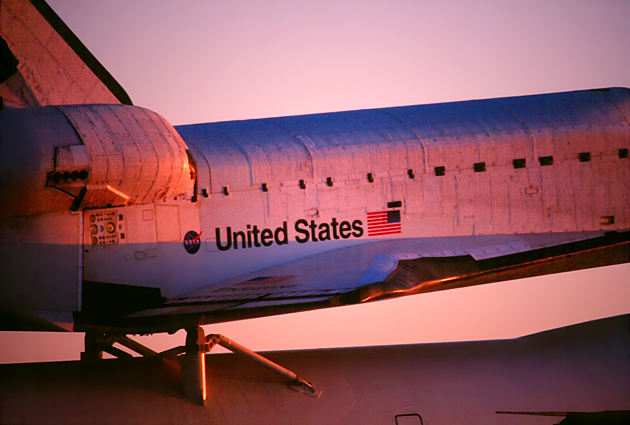Space Shuttle Endeavour
Taken: May 8, 2001
Ten years ago I had the pleasure of shooting Space Shuttle Endeavour's ferry flight departure back to the Kennedy Space Center in Florida. Endeavour landed at Edwards AFB in California on May 1, 2001 after completing the 11 day STS-100 mission. The Space Shuttle usually only lands at Edwards AFB when bad weather prevents it from landing in Florida.
I woke up at 2:30am in order to make the 5:30am departure. It was quite a unique experience to drive up a lonely 14 Freeway in the dead of night and then a pitch black Rosamond Blvd. It seemed as if I was driving into a black hole. And I almost didn't make it on time either. The MPs at the main Edwards gate couldn't find my authorization to let me on base. By the time I finally got to the NASA Dryden office, I was worried they might have left without me. Right when I walked up to the door they were stepping out to leave for the runway. That was close.

Find more of these pictures on my photostream @ Flickr



